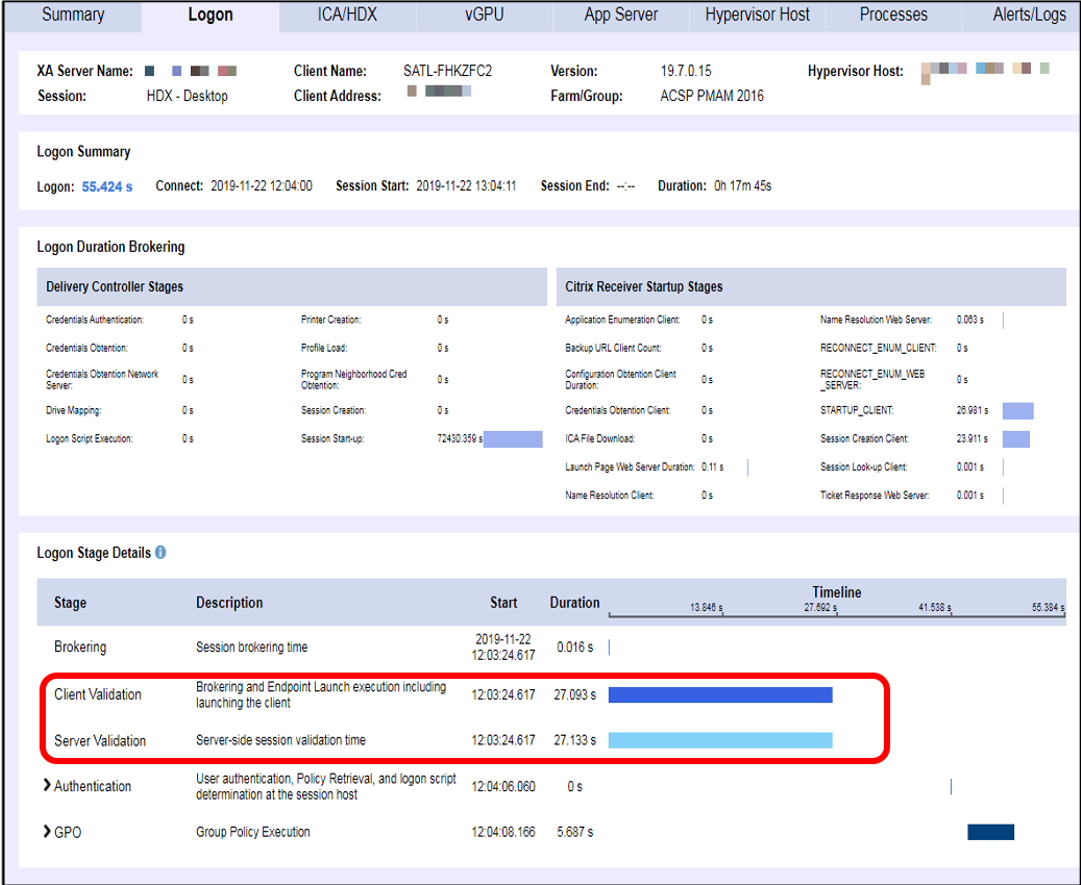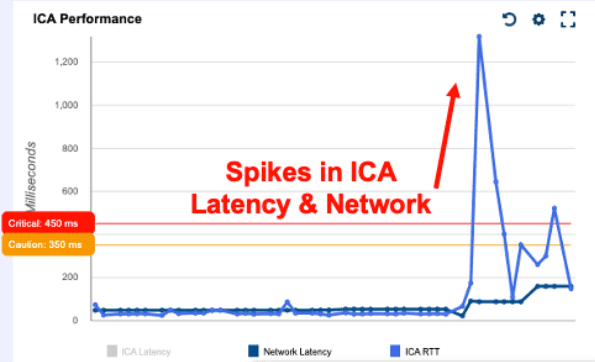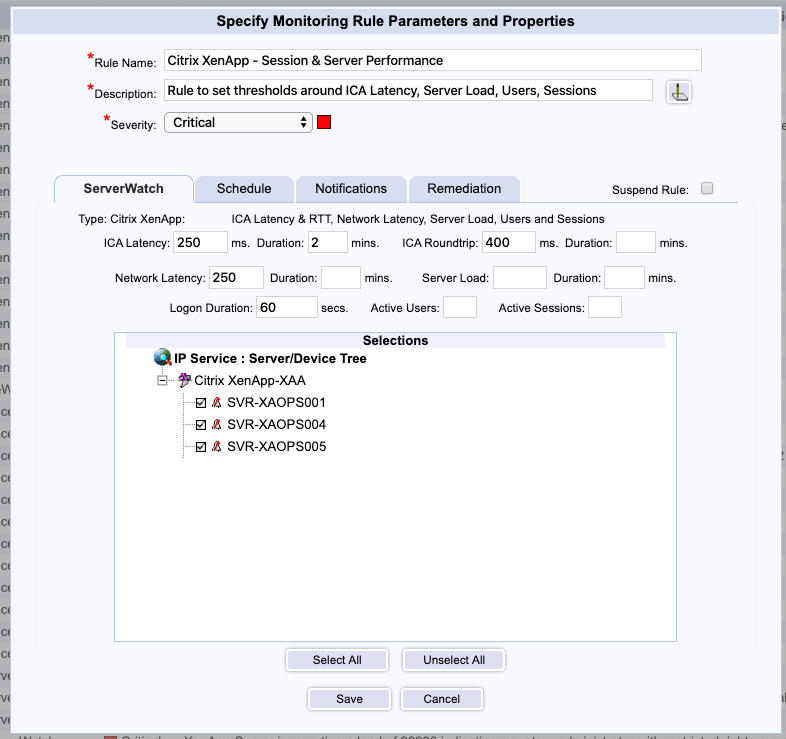Locana
Global Professional Services Provider Delivers Exceptional End User Experiences for Over 10,000 Users

“In order to deliver exceptional end user experiences to our clients and their users, we can either hire expensive Citrix consultants to isolate root causes of performance issues when they arise or invest in technologies like Goliath. Goliath’s embedded intelligence and automation not only helps us troubleshoot but also proactively prevents end user performance issues from happening.”
– John Bennett, Principal Consultant and Head of EPPM Practice at Locana.
Infrastructure
Citrix XenApp, Oracle Primavera P6, Azure
Challenge
Locana provides global information services to organizations of all sizes around the globe. They are dedicated to delivering exceptional customer care and helping their clients improve overall business performance through IT. One of their specialties is in servicing industries that leverage Oracle Primavera P6, an Enterprise Project Portfolio Management tool.
Primavera P6 is a resource intense application that is best delivered to end users through a virtualized environment. Locana delivers it to their clients through Citrix XenApp. Users of Primavera P6 are in the application often 8-10 hours a day planning projects, manipulating resource allocations, and running cost reports. Interruptions due to slow performance or random logoffs are detrimental as it not only disrupts workflows but can also have a cost impact if reports are not being delivered on time.
For Locana, a big piece of keeping client satisfaction high was ensuring Primavera P6 was always available and high performing. The challenge they faced is that, like with all applications, problems would arise. When performance issues occurred, Locana’s team had no visibility into the root cause. They didn’t know if it was due to an issue with the network, servers, storage, database, or the application architecture. John Bennett, Principal Consultant and Head of EPPM Practice at Locana, said “When performance issues occurred it was a guessing game to determining root cause, and we would spend our energy hoping to stumble on a silver bullet to fix things quickly.”
Eventually, in order to maintain a high level of customer satisfaction, Locananeeded to turn to a 3rd party tool that would proactively monitor and troubleshoot the end user experience. They needed to resolve issues quickly when tickets were filed and to prevent issues before their clients were ever impacted. Their customer commitment is to improve business performance and the only way to do that is to anticipate issues and address them before work is disrupted.
This is why Locana turned to Goliath Technologies. Goliath offers end user experience monitoring and troubleshooting software, with embedded intelligence and automation, to anticipate, troubleshoot, and prevent end user performance issues regardless of where workloads, applications, or users are located.
Solution
Isolating the Root Cause of Poor End User Performance Issues
Here are two examples of where Locana leveraged Goliath to address end user experience issues.
Troubleshooting Slow Citrix Logons
One challenge Locana faced was users calling in complaining of slow logons for Citrix or Primavera P6. The Locana team had little visibility into many of the factors that could impact the performance. Many of these users would travel to different locations to visit their project sites, so Locana didn’t know if they were logging on from a building site, remote location, or from within their office. They didn’t know if they had a good network connection or were tethering with their phone. The other pieces unknown were what laptops were being used, what browsers were being used, and other end user behavior factors. John shared, “We would get tickets that logon took 5 minutes, and we really didn’t have good insights to why. We also didn’t know if this was a one-off issue or impacted a high number of users.”
When the Locana team brought in Goliath, one of the first things they did was start collecting data about the end user sessions. Here they quickly were able to see a view into all sessions and identify that roughly 20% of all users were in fact experiencing poor logons.
From there, they started looking into the issues further and saw that many of these users were experiencing Long Client Validation or Server Validation Times (Figure 1). These longer times are highly indicative of something being wrong with Citrix Receiver. What the team at Locana found was that some clients were on older Citrix Receiver technologies, which allowed them to prove that by investing in an upgrade their end users would immediately see a performance improvement in logon times.
Figure 1: Logon Duration Tab
The Logon Duration tab displays the breakdown of the end user login from start to finish, giving the administrator usable metrics to reduce troubleshooting time. For example, long Client Validation and Server Validation times can indicate if poor performance is a result of a bad Citrix Receiver, enabling someone to quickly resolve.
Troubleshooting Poor Session Performance
Another area of ongoing concern was around poor session performance. Users of Primavera P6 were complaining of their application freezing or dropping connectivity altogether. The top complaints were coming from a single location, but Locana could not identify anything causing the issue within the Citrix infrastructure. The IT team onsite said there was no issue with the network, it didn’t appear to be an issue with the end points, or any other environmental factor.
Once Goliath was implemented, Locana was able to show that ICA Latency was high, indicating poor performance. They were able to drill into a specific user session and show that at the same time ICA latency spiked so did the network. They also were able to show with another chart that at the same time Connection Speed and Bandwidth dipped simultaneously (Figure 2). The data showed that while the network was working fine, the allocation to the Citrix sessions running Primavera P6 was not enough for this highly resource intense application. The fix is simple. Add more bandwidth allocation to Citrix. While the fix is easy, days or even weeks of time could have been wasted arguing about root-cause and pointing fingers. Having hard evidence on root-cause fosters collaboration and faster resolution times when multiple teams and vendors are involved.
Figure 2: ICA/HDX Tab
The ICA/HDX details the ICA channel usage to and from the user’s endpoint to the user’s virtual machine or session host server. This is often a key metric in a user’s experience. In this instance seeing a spike in ICA Latency and Network Latency often indicates a bandwidth allocation problem.
Proactively Monitoring Moving Workloads to the Cloud
In addition to using Goliath to troubleshoot issues, Locana leverages Goliath to proactively monitor the IT delivery infrastructure to alert on key conditions, events, and failure points around the end user experience. This was critical during a big initiative at Locana where they were moving their Citrix workloads from on-premise to the public cloud, Azure. Locana needed to ensure that as the infrastructure moved there was no interruption to the end user experience.
First, they leveraged Goliath to gather analytics on performance with the on-premise deployment. Then, as they migrated workloads, they continued to confirm that as workloads moved performance stayed equal or improved. They also set up proactive alerts to be notified if certain thresholds were hit around round-trip times, memory utilization, CPU usage, disk speed, and other performance metrics. As a result, Locana had a smooth transition moving their data center from on-premise to the cloud and uninterrupted services for their end users.
Figure 3: Monitoring Rules Setup
Monitoring rules are easily set up with configurable thresholds to align to each individual environment regardless of on-premise or in the cloud.
Results
Locana shared that without Goliath they would have tried throwing more hardware or CPU power at the issues to improve performance, and that this would have been a waste of money, time, and resources. They also could have invested in outside resources to try and resolve the issues, but that too may have delivered a short-term fix for immediate problems while doing nothing to prevent issues from occurring in the future. John shares, “At the end of the day, building the business case for Goliath was simple. We needed data. Data to identify fixes for our end user performance issues and data to ensure we could be proactive in addressing performance issues. Goliath gives us the data we need to be proactive in our business.”
With Goliath’s end user performance monitoring and troubleshooting software, Locana has transformed their support team to be proactive in addressing performance issues resulting in higher customer satisfaction and ability to positively impact their client’s overall business performance.



